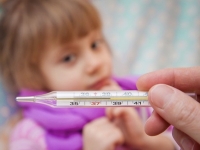Rabies: sources of infection, symptoms and projections
 Rabies is a deadly disease that, in almost 100% of cases, is fatal (there are only a few cases of recovery from it and it is not fully confirmed that the patient had just rabies). This is a viral infectious disease in which the human nervous system is severely affected.
Rabies is a deadly disease that, in almost 100% of cases, is fatal (there are only a few cases of recovery from it and it is not fully confirmed that the patient had just rabies). This is a viral infectious disease in which the human nervous system is severely affected.
How can you get rabies?
The rabies virus is found in the urine, saliva and tears of infected animals, after it enters the human body, it quickly infects the nervous system. A patient may have signs of cerebral edema, hemorrhage, and death of nerve cells of the spinal cord and brain.
A person can become infected with rabies from a sick animal, and both from a wild and domestic one. According to the World Health Organization, in 99% of cases, dogs are the source of infection, but cats, pigs, horses, cows, foxes, etc. can be dangerous. Continue reading
What is enterovirus infection? How to deal with it?
 Enterovirus infections are groups of diseases that arise from the introduction of an RNA-containing virus into the body, many of which are pathogenic to humans. Usually enterovirus is manifested as a general intoxication of the body and today it is quite common. How can one be protected from infection, and what to do if the infection still suffered a person?
Enterovirus infections are groups of diseases that arise from the introduction of an RNA-containing virus into the body, many of which are pathogenic to humans. Usually enterovirus is manifested as a general intoxication of the body and today it is quite common. How can one be protected from infection, and what to do if the infection still suffered a person?
Causes and Symptoms of Enterovirus Infections
Infecting the enterovirus can be from a sick person or from a carrier that is not sick, but is only a carrier of infection. Most often enterovirus children are ill. It is transmitted by the fecal-oral and food way, therefore, it is said that a person was poisoned while eating food. Often infection is due to infected vegetables and fruits that have been badly washed. Enterovirus gets to the fruit during irrigation with sewage, and then we are on the table. Continue reading
Diphtheria: what you need to know about the disease
 Diphtheria and diphtheria toxin
Diphtheria and diphtheria toxin
Diphtheria is an acute infectious disease, which is very dangerous to life. This is a severe inflammation of the upper respiratory tract (in most cases), eyes, skin. The main threat during this illness is not inflammation, but the toxin produced by the causative agent of diphtheria, which causes the damage to the cardiovascular and nervous system.
Diphtheria is caused by bacteria, the so-called diphtheria sticks, the disease is transmitted by airborne droplets, much less often – through household items.
Diphtheritic toxin has a very negative effect on the myocardium, developing myocarditis, as well as it can provoke an infectious-toxic shock, a general intoxication of the body, severe disorders in the work of the nervous system. Continue reading
Rubella: for whom a childhood illness can be dangerous?
 Rubella is a viral infectious disease that occurs quite easily in childhood, but harder in adulthood. Rubella is especially dangerous during pregnancy, because it causes severe malformations in the fetus and may even lead to its death.
Rubella is a viral infectious disease that occurs quite easily in childhood, but harder in adulthood. Rubella is especially dangerous during pregnancy, because it causes severe malformations in the fetus and may even lead to its death.
What you need to know about rubella?
Rubella is a very contagious disease that is transmitted by airborne droplets. You can also become infected through household items, but worst of all, this virus is transmitted from a pregnant woman to the fetus. The patient is contagious about a week before the appearance of the first rash and this is another week after the onset of the rash. If a person does not have specific immunity to rubella developed by an illness or vaccines, the probability of getting sick after contact with a rubella patient is 90% or even higher. Continue reading
What Is Meningococcal Infection? Why is she so dangerous?
 Meningococcal infection is potentially fatal, the diseases it provokes are considered in medicine as an emergency. For example, it causes the bacterial form of meningitis, as well as a number of other extremely dangerous diseases.
Meningococcal infection is potentially fatal, the diseases it provokes are considered in medicine as an emergency. For example, it causes the bacterial form of meningitis, as well as a number of other extremely dangerous diseases.
What should I know about meningococcal infection?
Meningococcal infection has been known since ancient times. About it is mentioned in vIIst. BC, and the first more or less detailed description was given in the middle of the XVII century. This is a bacterium that is transmitted by airborne droplets from person to person. The infection can spread from the throat through the flow of blood to the human brain, which is most dangerous. A person can be a carrier of meningococcal infection, not guessing about it, and infect others while staying healthy. Continue reading


